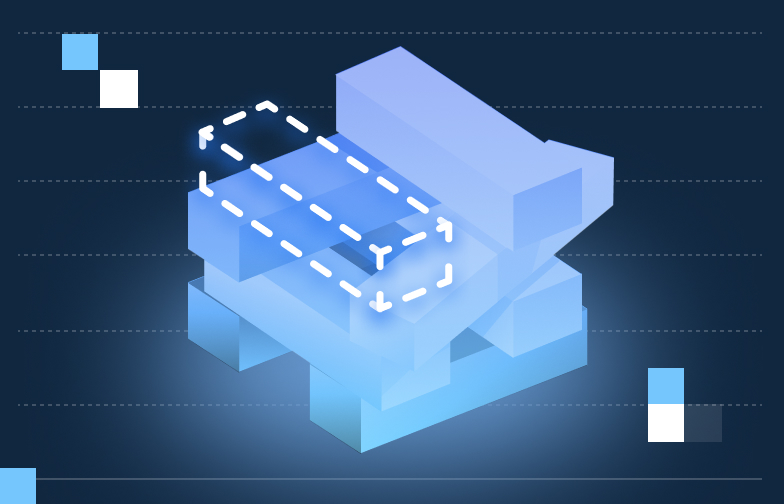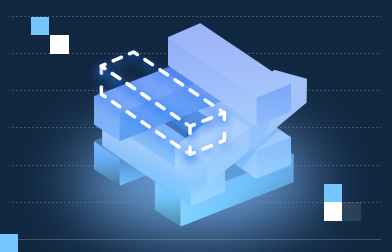TL'DR
- Cloud spend is now a major cost center, but most SaaS finance teams can’t cleanly separate what belongs in COGS vs. OpEx, leading to distorted margins and misleading financial signals.
- The missing layer is attribution — a system that maps every dollar of cloud spend to the business function it supports. Without it, both finance and engineering operate in silos.
- Accurate classification and consistent governance (through tagging, ownership, and reconciliation) transform allocation from a manual exercise into a financial control system.
- When attribution works, financial clarity follows — margins stabilize, forecasts tighten, and CFOs gain credible insight into efficiency and scalability.
The Cloud Cost Attribution Problem
Cloud spend is now one of the top three lines on a SaaS P&L, yet most finance teams can’t cleanly answer the question: which dollars belong in COGS and which in OpEx?
For a deeper look at why cloud commitments belong in OpEx—and how classification set the stage for governance—see our guide CapEx vs. OpEx in the Cloud.
Misallocations distort gross margin by hundreds of basis points, skew unit economics, and erode board confidence in the integrity of your P&L. For many SaaS companies, a one-point margin swing can move enterprise value by 5-10%.
Addressing the problem requires an attribution system that connects every dollar of cloud spend to the business function it supports. Achieving that level of discipline is the next stage of cloud financial maturity. It means treating allocation as a financial control system rather than a quarterly reconciliation exercise, supported by consistent tagging, clear ownership, and shared accountability across finance and engineering.
The first step toward that control is understanding how classification shapes financial performance. It begins with distinguishing which costs truly scale with customers, and which simply keep the business running.
Why Classifying Cloud Spend as COGS vs OpEx Matters
From a financial governance perspective, allocation accuracy directly affects how efficiently investors perceive you operate. COGS represents the direct cost of delivering your product or service to customers. OpEx reflects the infrastructure that enables your business to function but doesn't scale directly with customer usage.
When a SaaS company misclassifies 10% of its production compute as COGS, reported gross margin can appear 200–300 basis points lower than reality. That distortion flows through CAC payback, contribution margin, and pricing decisions. It creates false confidence in unit economics and sets unrealistic growth expectations.
Correct allocation sharpens every strategic decision that depends on understanding your true cost to serve: pricing adjustments, customer segmentation, infrastructure investment, and commitment purchasing strategy.
Understanding why this breakdown happens is the next step toward control.
Why Cloud Spend Classification Breaks Down in Practice
Finance often lacks visibility because cloud costs are structured for engineering, not accounting. Cloud invoices arrive organized by service type and usage, not by cost center or P&L line, while engineering designs infrastructure to solve technical problems rather than simplify month-end close.
That structure makes it hard to tell which resources truly serve customers and which support internal operations.
Shared infrastructure compounds the problem. For example, an API gateway may serve both production traffic and internal development, and a database cluster may support customer workloads alongside analytics queries.
Without shared ownership between finance and engineering, tagging discipline erodes, creating manual cleanup work and inconsistencies in how costs are reported. Those mapping gaps cascade into forecasting errors, reducing accuracy and increasing variance in gross margin.
How Do You Define COGS and OpEx in Cloud Accounting?
Defining the production boundary determines how accurately gross margin reflects true cost of service. COGS should include production compute, storage, data pipelines serving customer requests, and production support infrastructure. These are costs that scale with customer usage and disappear if you lose all your customers overnight.
OpEx captures development environments, staging infrastructure, analytics workloads, internal tools, administrative systems, and go-to-market technology. These costs enable your business but don't vary directly with customer volume.
Apply two lenses consistently: direct versus indirect benefit to customers, and variable versus fixed scaling behavior. Production databases that serve customer queries belong in COGS. Development databases that support engineering productivity belong in OpEx. KPMG's guidance on SaaS revenue recognition reinforces that COGS should reflect costs directly attributable to delivering the service to customers
Example classification framework:
The boundary won't always be perfectly clean, but consistency in how you draw it matters more than mathematical precision. It enables repeatable governance.
How to Handle Shared Cloud Services
Shared infrastructure is where CFOs and CTOs disagree most, and where allocation breaks down. Security tools, networking, and observability platforms support multiple environments simultaneously.
The allocation method matters less than maintaining consistency over time. The key is disciplined, transparent allocation logic based on measurable drivers.
Example allocation drivers:
In practice, precision should be proportional to materiality. Finance teams rarely need to pursue variance below fifty basis points unless margin trends are already under board review. The objective is to maintain consistent governance, not perfect mathematical alignment.
Building a Cloud Spend Allocation Model
Precision in allocation comes from governance, not from one-time accounting fixes. A disciplined model requires five foundational steps executed quarterly.
- Define the production boundary and ownership of each classification decision. Finance owns the P&L impact; engineering validates that technical categorization matches actual usage. Shared accountability turns governance from policy into practice.
- Enforce tagging and metadata standards across all cloud resources. Tags should capture environment, application, team, and cost center at minimum. Automation should prevent untagged resources from deploying to production.
- Identify shared services and establish allocation logic for each. Document your allocation logic so finance can explain and defend it under audit. Update this quarterly as your architecture evolves.
- Reconcile cloud data to the general ledger monthly. Variance should trigger investigation, not adjustment. If your allocation model and your invoice don't agree, something in your governance broke down.
- Review and recalibrate quarterly. Architecture changes, new services launch, and infrastructure scales. Your allocation model needs to evolve with your business.
Allocation methods that are documented, applied consistently, and reconcilable to source data are generally treated as reasonable management estimates under GAAP (notably, under ASC 250 and ASC 606-10-25). Auditors typically assess the clarity of the logic and evidence of control, rather than the specific telemetry feeding those estimates.
Most teams start by connecting ERP, BI, and billing exports to model allocations, but manual reconciliation quickly breaks down. Cloud Capital automates this workflow by linking AWS usage data to financial reporting logic, enforcing tagging compliance, and reconciling spend to the general ledger in real time.
The Gross Margin Mirage
Imagine a SaaS platform spending $1.2M annually on cloud infrastructure. Engineering estimates that 60% supports production workloads serving customers. But finance, lacking detailed resource mapping, books 90% of cloud spend as COGS based on vendor categorization of "compute services."
Gross margin appears 5 percentage points lower than reality. The board pressures leadership to improve efficiency. Teams chase efficiency by reclassifying expenses instead of reducing consumption. Six months later, gross margin improves on paper, but nothing fundamental changed in the business.
Once finance and engineering collaborate to build proper allocation, margin normalizes. The improvement wasn't from efficiency gains. It was from correcting the measurement. That correction restores credibility with investors and clarifies where real optimization opportunities exist.
The same logic applies across every company operating at scale: once allocation accuracy improves, the quality of financial governance changes completely.
Linking Cloud Allocation to Financial Governance
Allocation only creates value when it changes how you manage the business. In forecasting cycles, accurate allocation reduces reforecast time by 30-50% and tightens confidence intervals. Finance can model how infrastructure costs will behave under different growth scenarios because the relationships between revenue, usage, and cloud spend are clear.
Board-level reporting improves when you can present gross margin by product line, customer segment, or region. Investors understand your economics at a granular level, which strengthens confidence in your ability to scale profitably.
Investment decisions become sharper. You can distinguish between architectural inefficiency requiring engineering work and pricing strategy requiring revenue optimization. The FinOps Foundation's framework on accurate cloud forecasting emphasizes that allocation accuracy is the foundation for reliable financial planning.
Monitor forecast variance, commitment utilization, and gross margin stability monthly. These metrics reveal whether your allocation model reflects reality or hides deteriorating unit economics.
Once allocations are consistent, finance can integrate cloud cost drivers directly into FP&A models. This allows forecasts to reflect how usage, growth, and pricing decisions shape future margins. Allocation data becomes an input for planning accuracy, not just historical reporting.
Allocation without governance is static bookkeeping. Governance turns allocation into control.
Common Cloud Spend Allocation Mistakes to Avoid
Avoiding these mistakes is faster than fixing them quarterly:
- Don't treat all EC2 costs as COGS by default. Not every virtual machine serves production traffic.
- Don't ignore shared infrastructure allocation. The security tools protecting your entire environment have a cost that should be distributed fairly between COGS and OpEx.
- Don't fail to update allocations as architecture evolves. That cluster you deployed two years ago might have started in development and migrated to production. Your allocation should reflect current state, not historical decisions.
- Don't leave tagging entirely to engineering without finance oversight. Engineers optimize for functionality, not financial reporting. Finance must define requirements and validate compliance.
Turning Cloud Spend Allocation into a Governance Advantage
Cloud spend is no longer a line item to be minimized. It's a lever of financial truth that reveals how efficiently you deliver value to customers. CFOs who master allocation gain predictable margins, credible forecasts, and a sharper lens on business efficiency.
The journey from ambiguous cloud costs to precise financial signals requires discipline across three layers: classifying costs according to accounting standards, allocating them to reflect true economics, and controlling them through governance that connects engineering decisions to financial outcomes.
When finance can map every dollar of cloud spend to the business it supports, the conversation shifts from “why is cloud so expensive?” to “how efficiently are we serving customers?” That’s what true cloud cost governance looks like.
Cloud Capital provides the structure that makes that governance repeatable.


FAQs

















